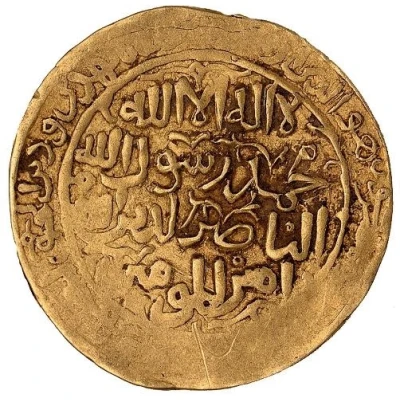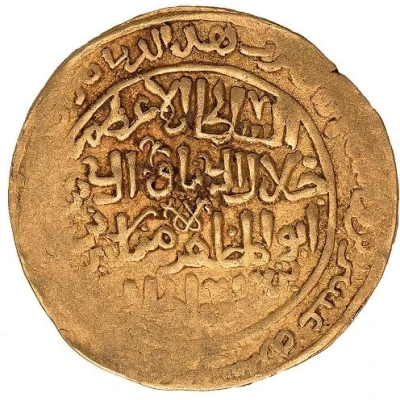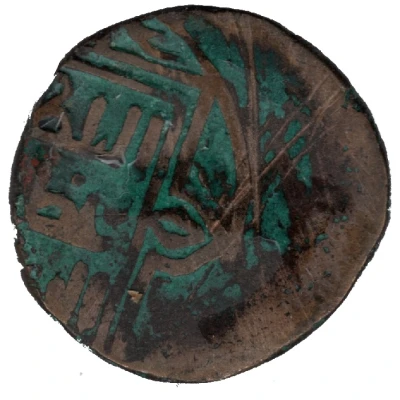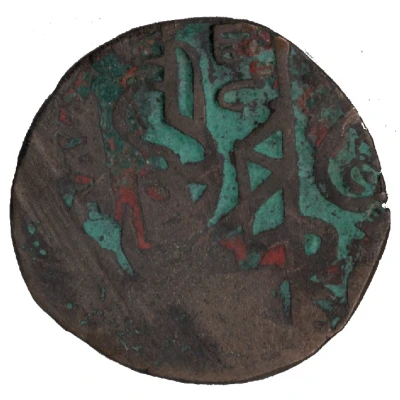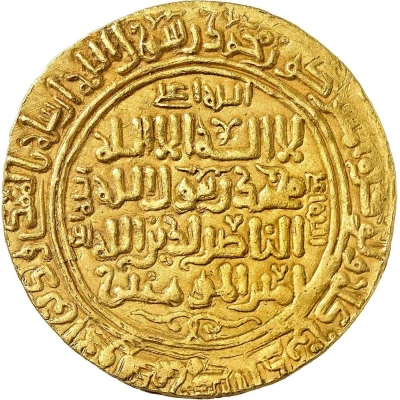
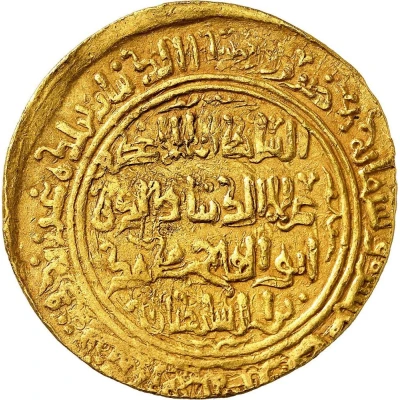

© سامعی (CC BY)
10 Dinar "10 Mithqal" - ‘Ala al-din Muhammad "Muhammad II of Khwarezm"
614 (1218) year| Gold | 44.35 g | - |
| Issuer | Khwarezmian Empire (Khwarezmian dynasties) |
|---|---|
| Shah | Muhammad II (1200-1220) |
| Type | Non-circulating coin |
| Year | 614 (1218) |
| Calendar | Islamic (Hijri) |
| Value | 10 Dinars |
| Currency | Dinar (1077-1231) |
| Composition | Gold |
| Weight | 44.35 g |
| Shape | Round (irregular) |
| Technique | Hammered |
| Demonetized | Yes |
| Updated | 2024-10-05 |
| Numista | N#192731 |
|---|---|
| Rarity index | 97% |
Reverse
Five lines inscription with ruler's titulature, mint and date in the margin
Lettering:
السلطان الاعظم
علا الدنیا و الدین
ابوالفاتح محمد
بن السلطان
ضرب هذا الدینار ببلده الغزنه فی السنه اربعة عشر و ستمائه
Translation:
The Great Sultan
High and low
Abul-Fateh Muhammad
Bin Sultan
This dinar hit his country in Ghazni in the year fourteen and six hundred
Edge
Plain
Comment
This yet unpublished 10 Mitqals coin provides evidence of the occupation of Ghazna by the Khwarizmshahs successors of the Ghurids. The forces of 'Ala al-din Muhammad bin Sultan Takash captured Ghazna in AH 612 (1215-1216 CE) and held the city until the Sultan's death in AH 617. His son Jalal al-din Mungubarni lost the city to the forces of Chingiz Khan few month later in AH 618 (1221). This extraordinary multiple of 10 Mithqals, struck in AH 614, illustrates the wealth of this short-lived sultanate during its apogee. These coins were not intended for general circulation but as treasury coins or given to courtiers on special occasions. The custom of striking these coins, of carefully regulated weight and alloy, was started by the Ghurids who found it convenient for their treasury to keep its accounts in 10 Mitqals weight pieces. The Ghurid ruler Mu'izz al-din and his sucessors seized huge treasure from their conquest in India and transported it to Afghanistan to be refined and struck into coins. The treasury was the personal property of the ruler, who could use it as he wished. If money was needed to pay the army, the treasury pieces could be converted into currency coins. Or else he could use them as a gift to reward an especially meritorious service.Interesting fact
One interesting fact about the 10 Dinar "10 Mithqal" coin is that it was minted during the reign of Muhammad II of Khwarezm, who was known for his military campaigns and territorial expansion, which led to the Khwarezmian Empire becoming one of the largest empires in the 13th century.
